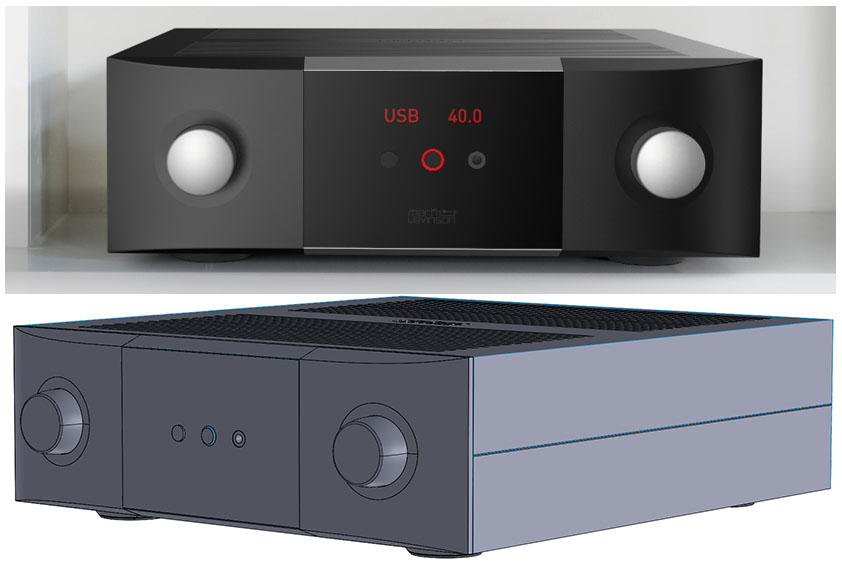Tech Talk
Mechanical Engineering for Mark Levinson
By Matthew Waterman - Principal Mechanical Engineer
The mechanical design process for a Mark Levinson product follows a typical pattern and strives for the common goal of un-questionable mechanical integrity and cabinet-grade fit and finish, regardless of product type.
The process is most extensive with a brand new, ground up design, such as the recent No5805 Integrated Amplifier. For a new product series, Harman’s Industrial Design group is engaged and the result is a series of renderings, CMF (color/material/finish) documents and CAD models. The latter can be imported into Mechanical CAD software (we use SolidWorks), and the mechanical design proper can begin in earnest.

Input is also provided from the Electrical Engineering team, so that the number of circuit boards is known as well as their interconnects and physical relationship to each other. Front panel controls and real panel connections are also identified. The product design begins to take shape in CAD, with a rough chassis of known height and width, and approximate depth. PC boards shapes and sizes follow, plus any other electrical components such as transformers. If there are custom heat-sinks then the thermal requirements are worked out and these too begin to take shape.
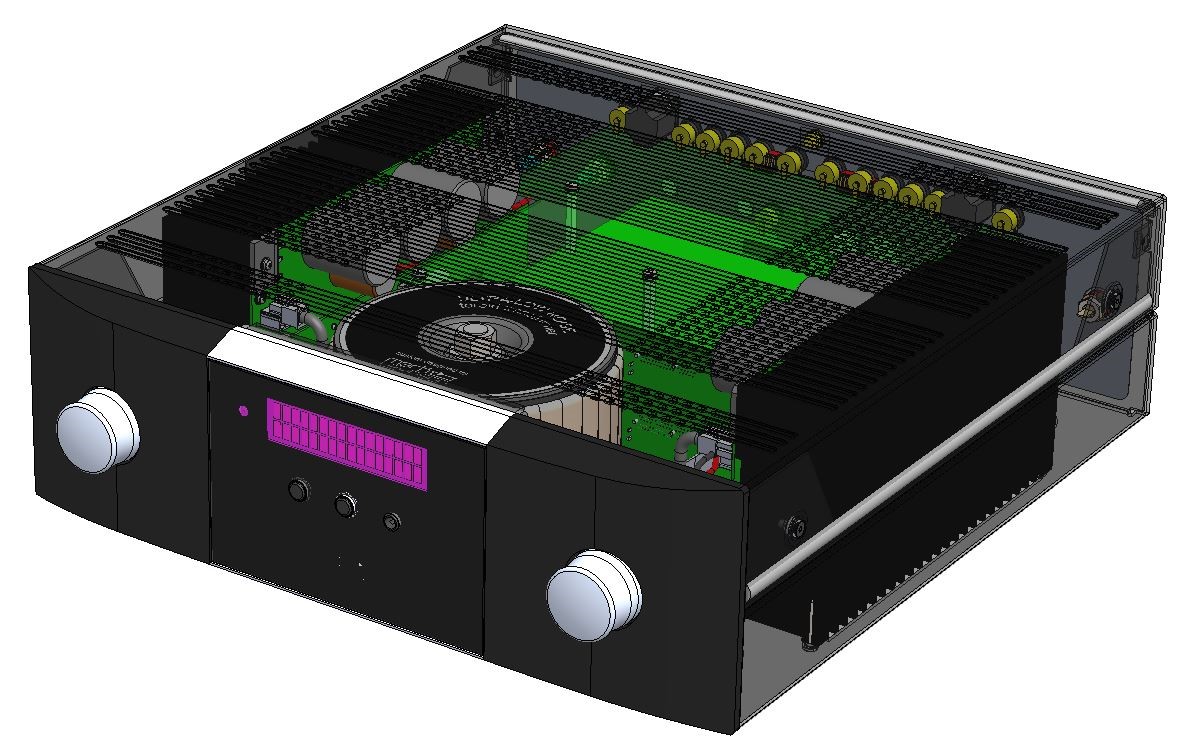
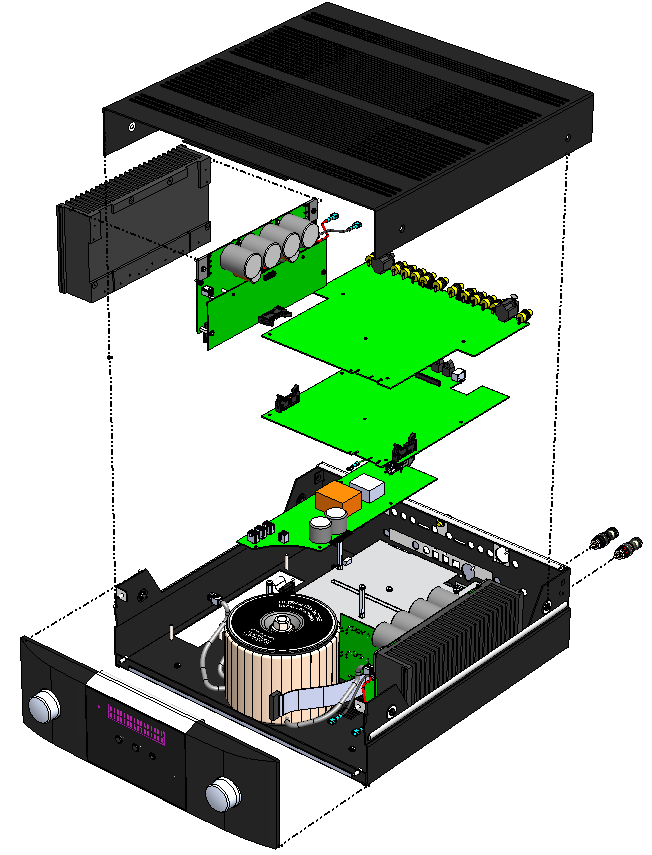
The details of the design is really what makes these products recognizable as Mark Levinson. I joined the design team for Mark Levinson in 1994, at Madrigal Audio Labs, during the development of the No33 Reference Amplifier. My 25 year history with the brand has equipped me with the ability to carry design elements forward into new products while consistently adhering to established design philosophy and brand priorities. A few examples are: heavy gauge black powder-coated steel chassis as a stable platform, internal symmetry when possible, compartmentalization to separate power supply and audio circuits, minimized use of cables as internal interconnects, back-printed Lexan rear labels for indelible connector marking, no fasteners visible on the front or top surfaces, minimized and/or hidden fasteners on the side surfaces, solid aluminum front panels with either laser marking or back-printed glass inserts, and solid aluminum buttons and knobs. Special attention is also given to touch points such as buttons and knobs, to insure that the tactile experience is an equally luxurious experience. The overall goal is to provide an enclosure for the electronics which delivers luxury construction, fit and finish, and which is recognizable as Mark Levinson inside and out.
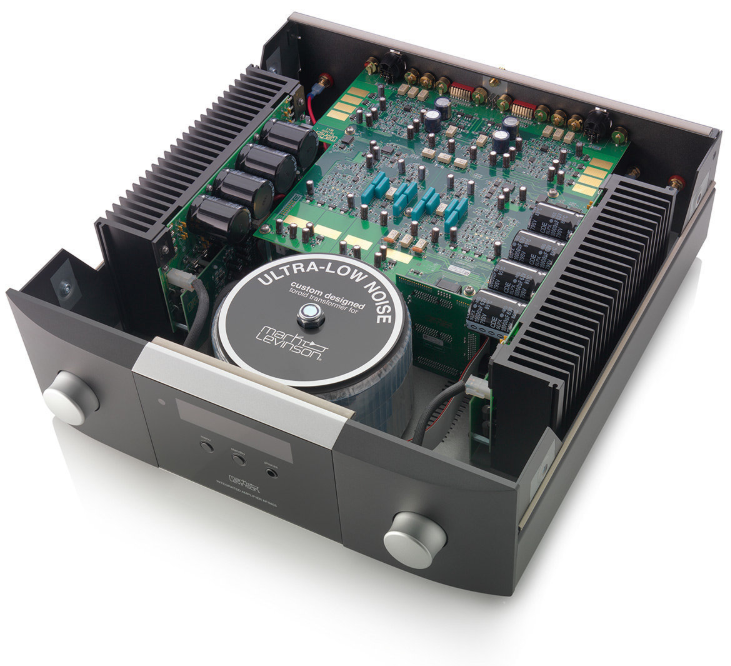
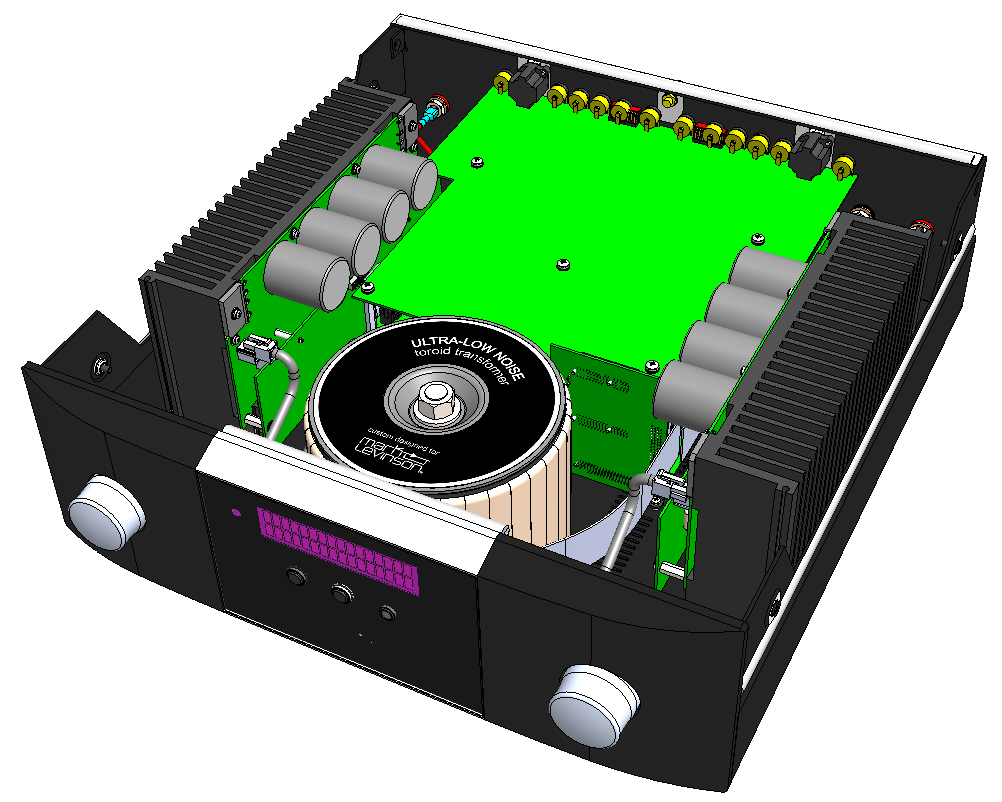
Our most recent challenge was to design the No5000 Series of integrated amplifiers and their companion products to fit in an unprecedented lower price range for Mark Levinson, but without sacrifice to Mark Levinson build quality. Rather than give up any mechanical integrity, the team workout out a design which allowed more efficient use of materials. For example, the left and right front panels are still solid extruded and machined aluminum, but with the knobs placed on the centerline and without markings the panels are able to be identical, which allows just one part to be purchased at twice the quantity. Fewer front panel buttons reduces parts count and complexity, enabling the buttons to remain solid machined aluminum. Knobs are also assembled with fewer parts and, like the buttons, are still machined from solid aluminum.
Behind the front panel, another efficiency was gained by looking at requirements of future products to ensure that the top cover can be used for multiple products within the series, thereby boosting purchase volume to control cost without sacrificing quality. A few more examples include the reduction of internal hardware types, focus on design-for-manufacturing (DFM) and design for assembly, and creating of 3D printed assembly fixtures such as to aid in part alignment during assembly (DFA).
After 25 years, I’m still proud to be a part of the Mark Levinson engineering team, and even prouder of what we are able to accomplish.

